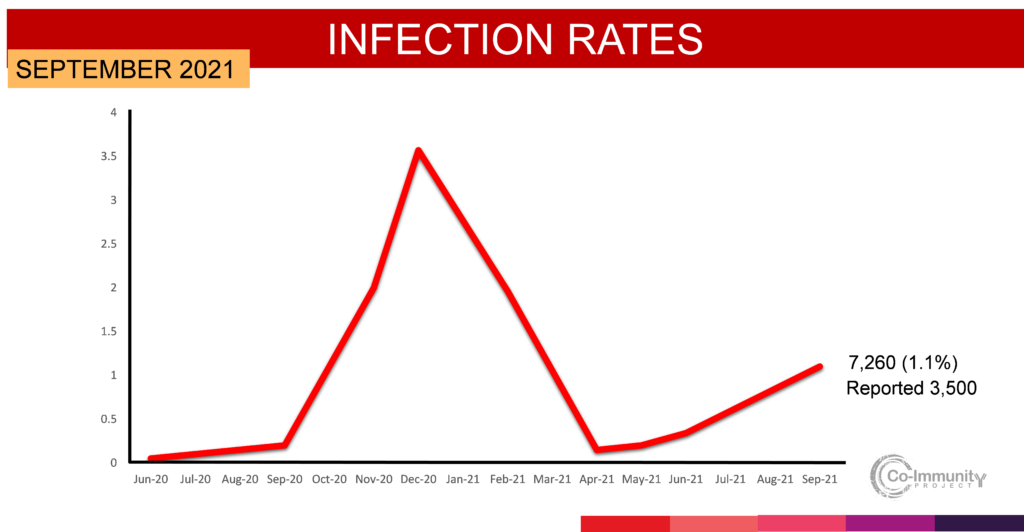Results from the latest round of testing performed as part of the University of Louisville’s groundbreaking project to track COVID-19 in Jefferson County show twice the number of people likely were infected with the virus in late August than were reported publicly.
Between Aug. 25 and Sept. 1, investigators from the UofL Christina Lee Brown Envirome Institute tested nearly 3,000 Jefferson County residents for the Co-Immunity Project to detect the presence of the virus in participants’ nasal swabs by the polymerase chain reaction (PCR) method and for the presence of antibodies against the virus in their blood.
The results showed that approximately 1.1% of all the participants tested positive for active coronavirus infections. Among vaccinated participants only 0.7% had an active infection, while nearly 5% of unvaccinated participants were actively infected. This number would roughly correspond to 7,260 active infections in the county, a nearly tenfold increase in infection rates over the rates measured in April, despite a sharp increase in vaccinated residents, as shown in Figure 1.

As in previous testing rounds, the team also tested for antibodies in participants. They found that independent of their vaccination status, in both the sampled and volunteer groups, nearly 16% of the participants had natural infection antibodies against the virus suggesting that they must have been infected by the virus in the recent past. These data indicate that in the last few months, at least 100,000 adults in Jefferson County have had COVID-19.
“These results highlight the steep rise in coronavirus infections in our community and provide a startling snapshot of the current state of the pandemic,” said Aruni Bhatnagar, director of the Envirome Institute. “Our estimates suggest that the number of infected individuals may be twice as high as that indicated in public records.
“Our work shows the vaccine is working as intended. Our population was almost 90% vaccinated, much higher than the 64% of fully vaccinated county residents. In the entire cohort, vaccinated people were over 12 times less likely to be infected compared with unvaccinated people. Though in our volunteer group, 65% of the active infections were in fully vaccinated individuals who had received the vaccine earlier this year. Most reported no or mild allergy-like symptoms and did not recognize that it may be a COVID infection thus did not think they needed to get tested.” Full article by Betty Coffman at UofL.

Recent Comments